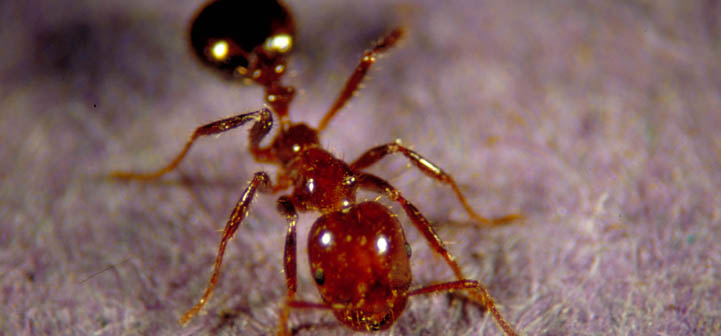Collectively, ants are beneficial insects in our environment. Their nest-building activities reduce soil compaction and help aerate the soil. Many ant species, such as imported fire ants, are omnivorous (they eat just about anything). A major source of fire ant diet consists of other arthropods (insects, ticks and mites, and other groups). Fire ants have been shown to decrease some pest insect numbers. For example, tick populations may be decreased in pastures and yards infested with fire ants. They may reduce populations of chiggers (species of mites) and prey on flea larvae and hatching cockroaches around the home. Cotton and sugarcane growers, in particular, appreciate the predatory nature of the ant because they eat boll weevils, caterpillars, and other pests of cotton. In sugarcane fields, they feed on the sugarcane borer, which reduces the need for insecticides usually applied for these pests.
In wildlife, imported fire ants prey on certain rodents and reptiles. This aspect may be considered to be beneficial if these organisms are pests. However, in the ecological balance of nature, removal of these animals by ants may restrict their availability as a food resource for other creatures such as predatory birds (raptors).

